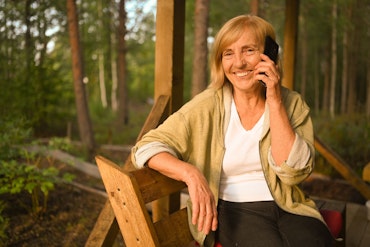Successful applicant announced for workforce boosting initiative
The consortium appointed the role of implementing a $33 million Government led and funded job creating initiative, for the growing aged and disability care sectors, has been announced.

An increase from 366,000 aged care workers in 2016 to 980,000 is needed by 2050 (Source: Shutterstock)
Minister for Aged Care, Ken Wyatt and Minister for Social Services Dan Tehan say Ernst & Young, alongside not-for-profit organisations and an employment service, were chosen to support the Boosting the Local Care Workforce Program from a “strong field of shortlisted organisations”.
With rapid growth in both aged and disability care sectors expected in the form of 60,000 more full time disability care workers by 2019, and an increase from 366,000 aged care workers in 2016 to 980,000 needed by 2050, the government hopes the Program will help increase the supply of care workers in the right geographical areas to meet the needs of both National Disability Insurance Scheme (NDIS) participants, and the aged care sector.
“The Turnbull Government’s $33 million Boosting the Local Care Workforce Program will help support a strong and sustainable workforce ahead of the full roll-out of the National Disability Insurance Scheme in 2020,” Minister Tehan says.
“The Program is designed to create more jobs in the disability and aged care sectors in regional, rural and outer metropolitan areas across Australia.
“Demand for new workers in these sectors is growing rapidly with an estimated 60,000 more full time workers required by 2019 to meet the demand in the disability sector created by the NDIS.”
In addition to their extensive experience delivering business support, Ernst & Young will partner with Serendipity WA, Community Services Industry Alliance and First Peoples Disability Network, creating what the Department of Health are calling a “strong network” with influence across the specialised service sectors.
Minister Wyatt says the Program, which was announced in the 2017-18 Budget, is “vital” to the disability and aged sectors.
“The assistance provided by this grant opportunity will help disability and aged care providers in regional, rural and outer metropolitan areas compete in what is an increasingly market-driven environment,” he says.
“This program will support providers to expand and integrate their workforce to meet the needs of NDIS participants and the care sector more broadly, complementing our aged care reforms.”
The Boosting the Local Care Workforce Program funding is split into three key areas, including:
-
A $9.1 million for the Care Workforce Regional Coordinator Initiative, supporting NDIS and aged care providers in regional, rural and outer metropolitan and non-metropolitan areas, and raising awareness of employment opportunities in the sectors through public awareness sessions. Enlisting the help of 25 skilled care workforce regional coordinators placed in key locations across Australia who will engage with local NDIS and aged care providers and build local networks
-
$4.1 million for the national Specialist Coordinator Initiative, which will engage a group of up to 10 specialists to connect with the two sectors
-
$19.8 million for the Sector Transition and Employer Support Initiative which will deliver one-on-one transition support to NDIS providers for business advice and professional services
The Boosting the Local Care Workforce Program is expected to commence later this month (January 2018).























